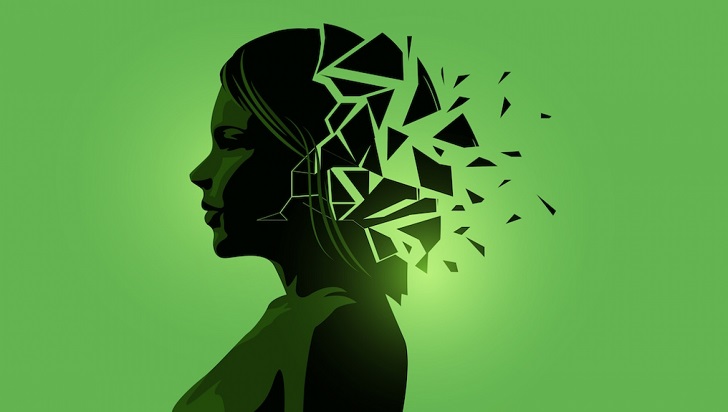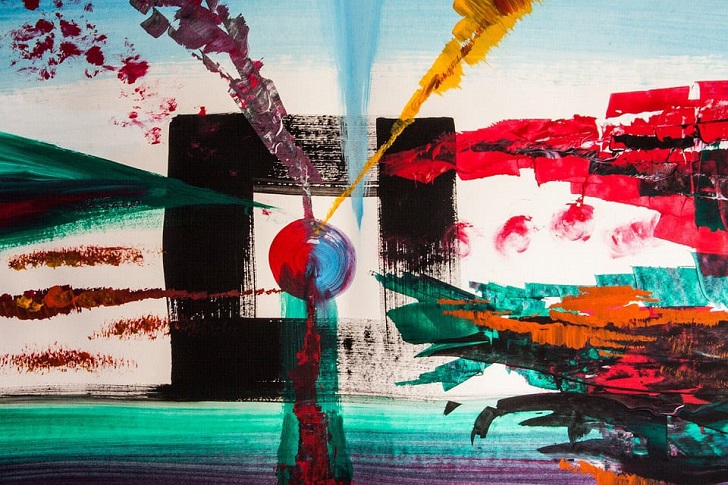
Promoting Mental Health Using Art And Technology

Mental health is an essential aspect of overall well-being that affects everyone’s daily life. Art and technology have emerged as potential tools to support mental health, helping individuals to cope with their emotions, reduce stress, and increase their overall well-being. Art therapy and digital technology have become increasingly popular in recent years, providing unique and innovative ways to promote mental health.

Sarah Finch/ Pinterest | Feelings come and go like clouds in a windy sky
The Benefits of Art Therapy
Art therapy has been around for many years and is a form of therapy that uses art to help individuals express and communicate their emotions. Art therapy can help people of all ages to cope with stress, anxiety, depression, and other mental health issues. Art therapy’s creative process can help individuals explore their emotions, process traumatic experiences, and gain a sense of control over their lives.
Art therapy can be beneficial for people who have difficulty expressing their emotions verbally, as it provides an alternative means of communication. Art therapy can also be a useful tool for children who may not yet have the language skills to express their emotions fully.
The Role of Technology
Digital technology has become essential to daily life and is increasingly used to support mental health. Various apps, online programs, and virtual reality platforms have been developed to provide mental health support to individuals.
One significant advantage of technology is that it provides mental health resources for individuals who may not have access to in-person therapy. Digital technology also provides privacy and anonymity, essential for individuals who may feel stigmatized for seeking mental health support.

Sarah Finch/ Pinterest | Happiness can be found even in the darkest of times, if one only remembers to turn on the light
Virtual Reality (VR) and Mental Health
Virtual Reality (VR) is a rapidly growing area of technology that is becoming increasingly used in mental health therapy. VR allows individuals to experience simulated environments that can be used to address various mental health conditions.
For example, a virtual reality program can create a simulated environment of a flight, helping individuals with a fear of flying to confront and overcome their fear in a safe and controlled environment. The immersive nature of VR can provide a sense of presence and engagement that is difficult to achieve with traditional therapy methods.
Rising Challenges
While art and technology can potentially benefit mental health, their use has also associated challenges. Art therapy requires a trained therapist to guide and support the creative process, which can be expensive and challenging for individuals with limited resources.
Similarly, while technology can provide accessibility and anonymity, it may not suit everyone. Some individuals may find digital platforms impersonal, while others may struggle with these technologies’ lack of human interaction.

Sarah Finch/ Pinterest | Positive affirmations and self-talk can help shift negative thought patterns and improve self-esteem
Future Directions
As technology evolves, new opportunities for supporting mental health will emerge. Artificial Intelligence (AI) is one area of technology being explored for its potential to provide personalized mental health support. AI can analyze data from individuals’ daily activities, including social media use and exercise habits, to identify potential risk factors for mental health issues.
Another development area is wearables, such as fitness trackers, to monitor physiological data that can provide insights into mental health. Wearables can track heart rate variability and sleep patterns, providing valuable information about an individual’s stress levels and overall well-being.
More in Mental Health
-
`
5 Reasons Why Dad’s Side of the Family Misses Out
Family bonds are intricate and multifaceted, often creating a unique tapestry of connections. However, many people notice a peculiar trend: stronger...
July 12, 2024 -
`
A Quick Guide on How to Get Short-Term Disability Approved for Anxiety and Depression
Living with anxiety or depression poses unique challenges, particularly in the workplace, where stress can exacerbate symptoms. For many, short-term disability...
July 5, 2024 -
`
Why Do People Feel Sleepy After Eating?
Is feeling sleepy after eating a sign of diabetes? Well, not directly. There are many reasons why you feel drowsy after...
June 20, 2024 -
`
What Is High-Functioning Depression? Symptoms and Treatment
High-functioning depression may not be a term you hear every day, but it’s a very real and challenging experience for many....
June 13, 2024 -
`
Kelly Clarkson’s Weight Loss Ozempic Journey – Debunking the Rumors
In a refreshing moment of transparency, Kelly Clarkson, the beloved singer and talk show host, sheds light on her remarkable weight...
June 3, 2024 -
`
What Is the Best Milk for Gut Health and Why?
In recent years, the milk section at the grocery store has expanded far beyond the traditional options. While cow’s milk has...
May 30, 2024 -
`
Do Dental Implants Hurt? Here’s All You Need to Know
When you hear “dental implants,” you might wince at the thought of pain. But do dental implants hurt as much as...
May 24, 2024 -
`
5 Key Differences Between A Psych Ward & A Mental Hospital
Curious about the differences between a psych ward and a mental hospital? You are not alone. With the mental health conversation...
May 16, 2024 -
`
It’s Official! “Selling Sunset’s” Christine Quinn & Husband Christian Dumontet Are Parting Ways
Have you ever found yourself unexpectedly engrossed in the personal lives of celebrities, especially when their stories take dramatic turns? Well,...
May 9, 2024










You must be logged in to post a comment Login